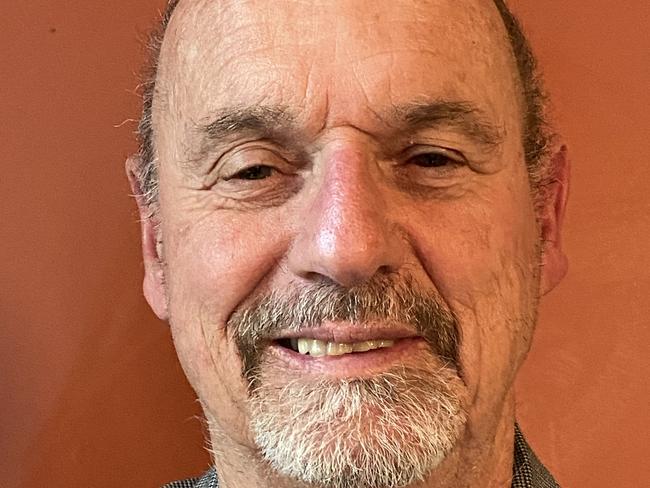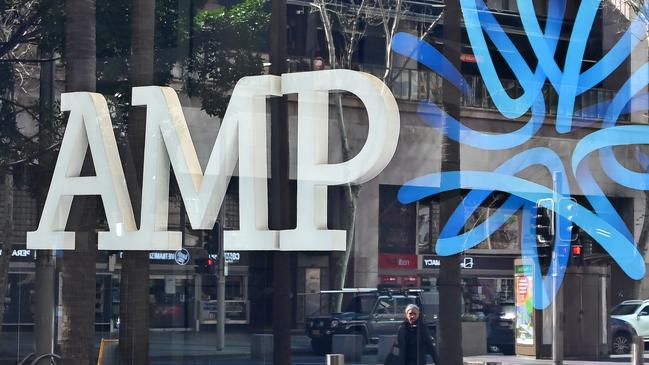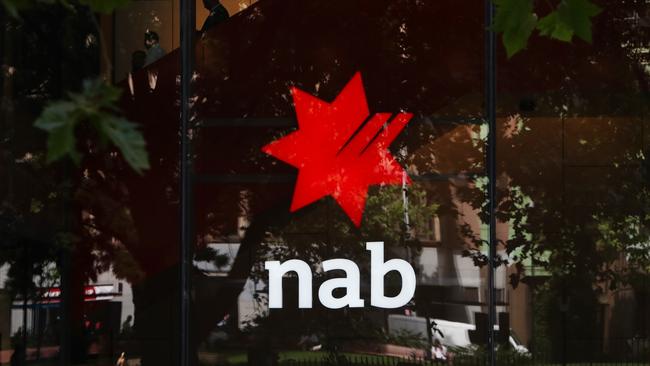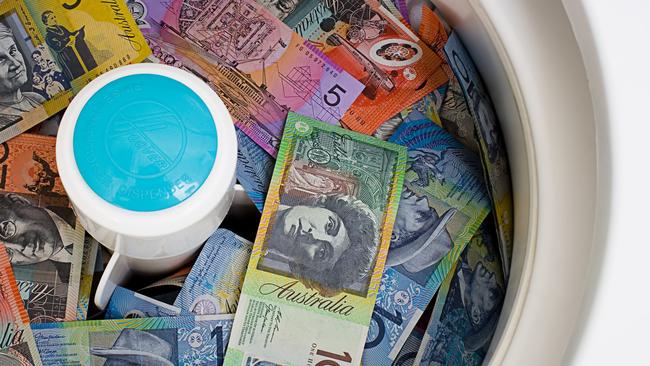‘Disgusted’: Bank returns money to scammers
An Australian family lost $2.5 million – life savings accumulated over 30 years – and they uncovered staggering failures across major banks.

Costs
Don't miss out on the headlines from Costs. Followed categories will be added to My News.
An Australian man whose family had their life savings stolen has been left “disgusted” that a bank recovered some of the money — yet the funds were later released back to the scammer.
Kim Sawyer said the “devastating theft” saw his family lose $2.5 million in just over a month. He has now revealed that simple technology could have stopped the sinister scam in its tracks.
Account name matching is a basic anti-scam measure that has blocked many fraudulent transactions in other countries and despite a $100 million pledge for Australian banks to roll out the technology it still isn’t place.
The Melbourne man has also called out mule accounts housed by banks – where scammers get victims to deposit the stolen money – claiming it is the “centre of the scam” issue, with the insidious crime overall seeing $2.7 billion lost by Aussies in one year alone.
Mr Sawyer is lending his support to news.com.au’s campaign People Before Profit, calling on the federal government to make it mandatory for banks to compensate scam victims just like they are forced to do in the UK.
In October last year, the UK introduced world leading legislation making compensation mandatory for scam victims within five business days unless in cases of gross negligence.
Mr Sawyer said there was “substantial manipulation” from the scammer with more than 30 phone calls and 100 emails, while they also assumed the name of a bank employee.
The 71-year-old thought he was investing in four term deposits, which he said were only slightly above the market rate of interest, with St George Capital which he was led to believe were associated with the major bank.
His wife, daughter and him made 28 transfers over a month to four different accounts, which they thought were in their name. But within 24 hours the money had disappeared from the accounts.
He said one of the scammer accounts had been created under a business name called Straya United Investments – and if name matching technology had been in place it would have stopped the transaction.
The former finance academic said one of the mule accounts was housed with Westpac where six transfers from his NAB account deposited $520,000.
The same Westpac mule account also received $480,000 from transfers made by Mr Sawyer from his AMP bank account.
Westpac initially told AMP that nothing had been recovered from the account, he said.
He claimed “banks closed shop straight away” with investigations shut down swiftly but an “extraordinary thing” happened.
“Westpac later informed AMP that $15,005 was recovered and requested AMP send an indemnity request,” he revealed.
“It took AMP 23 days to file an indemnity claim and by then Westpac had released our money to the scammer as the scammer filed a complaint to AFCA and threatened legal action.
“Westpac gave $15,000 to scammers when it was scammed.”
A Westpac spokesperson said the bank is focused on identifying, investigating and shutting down illegitimate accounts to prevent further harm and detecting mule accounts includes biometrics and ID verification when people open a new account.
Do you have a story? Contact sarah.sharples@news.com.au

The second set of mule accounts were with Commonwealth Bank (CBA) with $230,000 deposited but the funds were also transferred out within 24 hours.
Another CBA mule account received 10 transfers totalling $949,000 over one month – with one transfer made from the couple’s AMP account and another nine from Macquarie Bank.
Despite being initially told by CBA that no funds were recoverable at the end of 2023, Macquarie advised the family in February last year that $187,000 had been returned.
Yet, AMP were unable to recover any funds from the same CBA account, he added.
An AMP spokesperson did not respond to the specific customer case but said the bank has implemented a comprehensive anti-scam strategy.
There was a third mule account with ANZ where $249,000 was transferred.
“AMP requested recovery from ANZ, but ANZ never responded. AMP should never have allowed such a non-response,” he said.
He added that there was a failure to diligently pursue the recovery of the family’s money. “They did not demand responses when responses were not given; they filed indemnity claims too late; there were inconsistencies between the banks for the same mule accounts,” he noted.
A CBA spokesperson said once the bank becomes aware of a scam or fraud transaction, it works closely with other banks to take action to attempt to recover funds, together with co-operating with law enforcement agencies.

An ANZ spokesperson said it could not comment on specific cases but in 2023 the bank introduced a mule detection model, which leverages artificial intelligence and machine learning technology to detect accounts being used to receive funds from scam victims.
Mr Sawyer said his wife has “suffered enormously” as a result of being a victim of a scam.
“It’s been a terrible problem. I think people don’t realise the extent of problems scam victims go through,” he said.
“She hasn’t slept properly for 16 months and for us, even though we have got other money and are better off than a lot of people, it’s been absolutely devastating. The worst thing is the scam is bad enough but what’s happened since has been absolutely shocking.
“I’m absolutely disgusted with the response from government and I think the Scam Prevention Framework is complete window dressing. I think that’s been the most devastating aspect is lack of support. We are on our own.”
Meanwhile, name matching technology could have prevented the Sawyer’s falling for the scam.
In July 2022, the Australian Competition and Consumer Commission called on the banking sector to establish an industry-wide account name checking system.
Only in late 2023, did the Australian Banking Association announce a $100 million investment by banks to block customers from transferring money if a name does not match the details of the recipient.
Mr Sawyer claimed “banks are clearly accessories” to scams.
“Banks are significant accessories to crime as without mule accounts and money laundering it couldn’t occur,” he said.
“In our case the mule accounts were set up one week before we were started scamming in five different business names – that’s where it starts. The centre of scams is mule accounts and money laundering and it allows them to escape detection as money goes offshore and it’s very hard for police to get money back.
“We are paying the price as banks are not protecting customers. There is no confirmation of payee and we are paying the price for a very weak regulatory framework.”

The family said they had never made large transfers in the two years prior to being scammed, which they said should have been a red flag.
The Sawyers lodged complaints with the Australian Financial Complaints Authority (AFCA) but the dispute resolution service ruled in the banks’ favour.
In its submission to the Treasury Consultation Paper on Scams and Mandatory Codes in January, AFCA was unequivocal about how the fraudulent transactions are carried out, Mr Sawyer said.
“Scams using mule accounts would likely not occur without the ability to open and
obtain mule accounts, or at least be reduced if recall functions and liability
obligations were introduced,” the dispute resolution service wrote.

There was a serious possibility that the family were being defrauded as there were a series of large transactions to new payee accounts and there were reasonable grounds for any of the three sending banks – AMP, NAB and Macquarie – to make inquiries as to the transactions, he added.
“Unfortunately, we could not see what a bank could have seen if only someone had asked. We could not see that the payee accounts were not in our name or that money was laundered within 24 hours of being received,” he noted.
Macquarie Bank flagged the second transaction with the family and ultimately alerted them to the scam. It’s BSB matching technology also showed the transfer was being made to a CBA account, rather than St George bank.

A spokesperson for Macquarie Bank said the customer confirmed that each bank transfer was authorised by them and should be processed by Macquarie.
“AFCA has investigated this matter, determining Macquarie fulfilled its obligations and was not responsible for the loss,” they said.
“We sympathise with the Sawyer family’s situation and remind all our customers to remain vigilant of investment scams run by criminals claiming to represent a verified institution.”
Mr Sawyer added there was also clear evidence of money laundering and NAB should have referred the matter to appropriate authorities, such as the police and Austrac, for an appropriate investigation.
A NAB spokesperson said they were unable to comment on specific customer matters, but the bank makes every effort to recover money stolen by these criminals.
Confirmation of payee technology is due to be introduced by Australian banks by the end of the year.
Australian Banking Association CEO Anna Bligh said she understood the “frustrations” at how long it was taking to come online but said it required a “whole system build” and testing to ensure it works across the whole banking system.
Ms Bligh has also taken issue with social media posts on Facebook advertising bank accounts to be “rented for a criminal purpose”, and argues mule accounts are posted on social media but “banks can’t take that down, only the media platforms can”.
“Social media giants are some of the biggest companies on earth. Why would we as Australians let them off the hook? If banks are the only ones liable for scams there will be a million more of these sorts of ads luring people in tricking them and taking their life savings,” she said.
sarah.sharples@news.com.au
Originally published as ‘Disgusted’: Bank returns money to scammers





